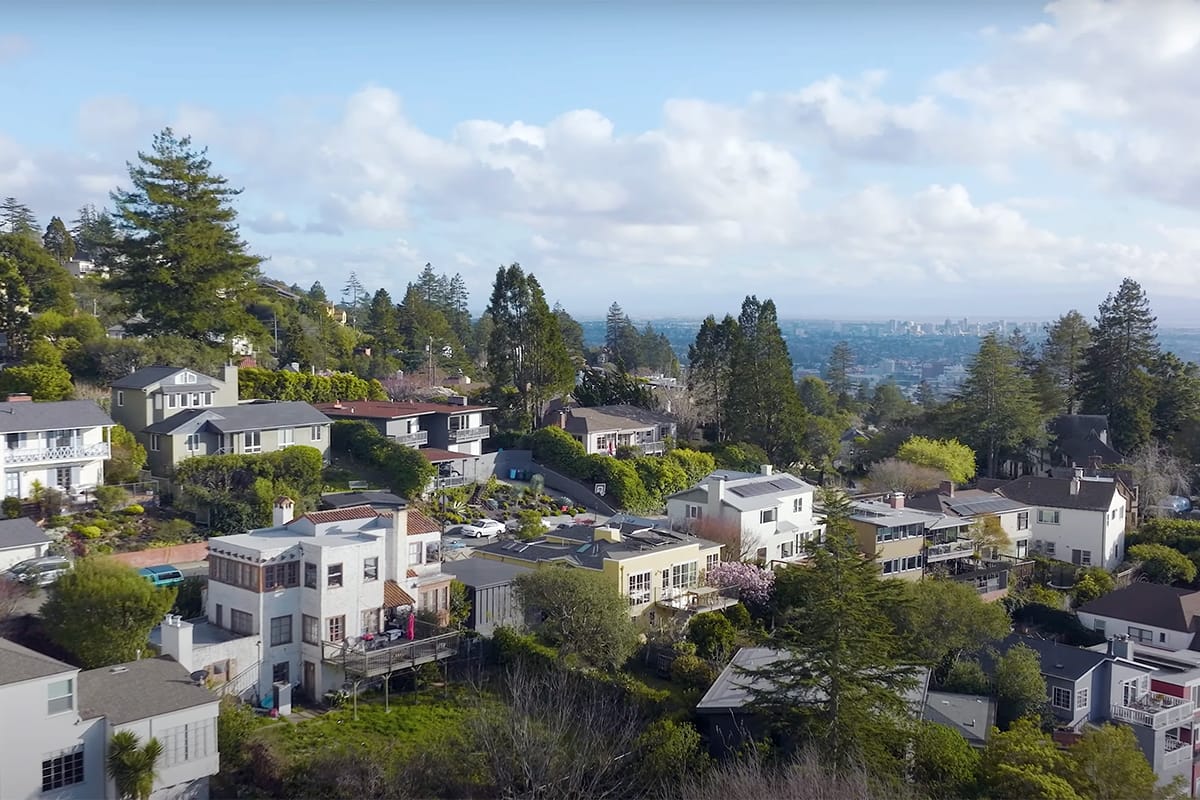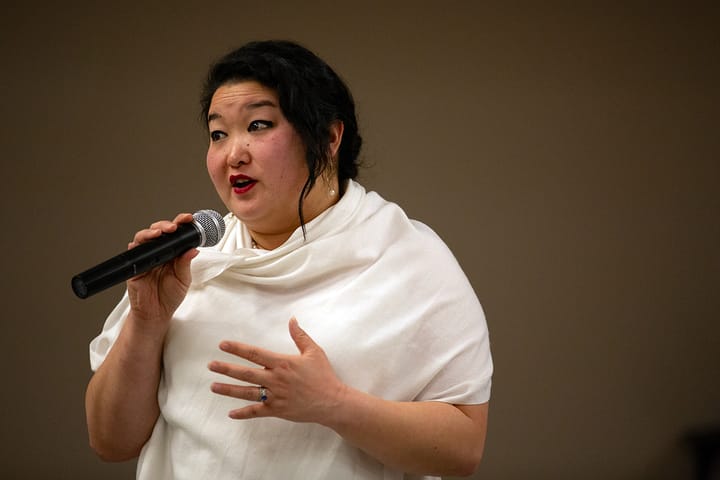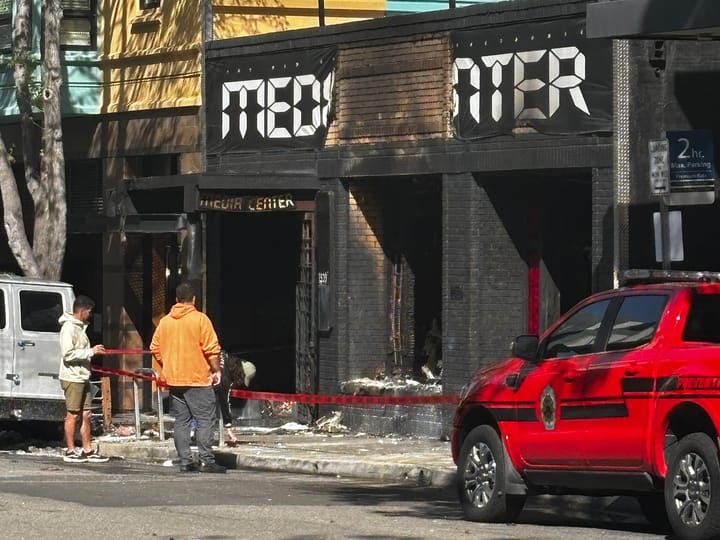Berkeley approves strict wildfire plan for most vulnerable areas
The new standards are among the strictest in the state, based on a preliminary review by The Scanner.

Acknowledging hard, costly work ahead for some residents, Berkeley officials unanimously approved an aggressive plan Tuesday to help mitigate wildfire in the city's most vulnerable neighborhoods.
The biggest change under the plan, called EMBER for "Effective Mitigations for Berkeley’s Ember Resilience," prohibits plants out 5 feet from the base of buildings in the city's very high fire hazard zones, an area called Zone 0 (pronounced "zone zero") in defensible space-speak.
Hardscaping, such as gravel, rocks or dirt, is the recommended alternative.
Plants in noncombustible pots would be allowed, with some height restrictions, as well as tree trunks or boles, as long as their leafy crowns clear roofs by 10 feet and aren't near chimneys.
Wood fencing also won't be allowed in the area, which means 5 feet of space or noncombustible fencing against structures.
Defensible space, or thinning vegetation for wildfire mitigation, is intended to slow fire and give fire crews room to maneuver.
Under city and state regulations it extends for 100 feet out from structures in two zones. Zone 0 updates this model.
Berkeley's new standards are among the strictest in the state, based on a preliminary review by The Scanner.
Only the town of Paradise, severely damaged in the deadly 2018 Camp Fire, has essentially the same Zone 0 standards. South Lake Tahoe, Hayward and Ventura County have adopted similar versions, but less comprehensive.
The rule initially will be required in two neighborhoods — about 1,000 households — along the city's eastern border with open space deemed most vulnerable to wildfire, a quarter-mile slice between Grizzly Peak Boulevard and Tilden park, and Panoramic Hill.
The plan calls for phased regulations over time in other very high hazard areas.
"[I] understand a lot of people are concerned about the cost and impacts associated with these beefed up requirements, but the cost and impact of wildfire would be … far more catastrophic," said Councilman Mark Humbert, echoing a sentiment of most officials and many public commenters. "As we saw in Los Angeles, fires can move with scary and extraordinary speed and destructiveness and can even spread into areas that were thought to be lower risk."
"I really don't want us to delay any longer"
A few dozen people spoke at Tuesday's meeting, most from Berkeley Hills neighborhoods affected by the proposal.
The majority supported the plan.
"We are incredibly lucky that our Berkeley Fire Department is at the leading edge of wildfire mitigation efforts," said Nancy Gillette, a retired U.S. Forest Service entomologist. EMBER, she added, "should be a model for all East Bay local jurisdictions. It's supported by all the best available science, and is supported by all major wildfire nonprofits and state and local fire officials."
"I urge the City Council to support EMBER, an extraordinary opportunity to avoid another Altadena or Lahaina," Gillette went on, referring to the devastating 2023 Maui wildfire that largely leveled the historic town and killed 102 people.
Opponents, many of whom also live in high wildfire hazard areas, mostly focused on several key areas.
Some expressed skepticism about the benefits of a Zone 0 with no plants, as opposed to some growth or nonflammable species.
Some cited the high cost of yard work and new fencing, pointing out it will hit some residents more than others.
Others said undergrounding utility lines and cutting back eucalyptus and other growth over the city border in the East Bay Regional Park District should be wildfire prevention priorities.
"Tilden is our first line of defense, Tilden park. Cut the trees," said third-generation resident Steve Tracy, who also called for fewer cars on the hill's narrow streets. "No Zone 0. Lush green gardens aren't the problem here. Take your time, guys. Do it right."
Another, David Edwardson, a Berkeley native who lives in the home he grew up in nearly six decades ago, said: "This policy would be a major financial stress on me. We're a single income household and I make 27 bucks an hour."
He, like a few others, called for more proof the zone makes a difference in homes already hardened or mitigated against fire with fire-resistant materials.
One woman, who identified herself as Lisa, said redwood trees on her property keep her house drippy wet and that there is still more to learn from the LA fires: "The one-size-fits-all aspect of the policy … should be changed."
But others had different takes.
"I really don't want us to delay any longer," said resident Yen Trac.
"Yes, I agree," she added, in a nod to skeptical neighbors. "We should underground more of the power lines in our neighborhood, we should take more effort to reduce fuel in Tilden park. But we should also do what we can within our neighborhood."
" I have done everything that I can in my home," Trac went on. "I have hardened it, and I'm now going to remove my favorite plants that I have tended for 24 years.… And that is because I do not want my neighborhood to burn down. I want my neighbors to be safe. I want them to have a home to return to."
In a similar vein, one Panoramic Hill resident, a Berkeley native, said, "One thing that I know to be true is that the climate is changing, so it's bad now. It's only gonna get worse."
"I'm here to support Chief," he continued. "I love my plants, but I love my home more. I will miss my redwood fences, but I would miss my neighborhood more. And I care about people and don't wanna lose my friends. And I think that 5 feet of vegetation clearance is a pretty reasonable approach."
"I think it's the first step," he said, in closing. "But I would argue we should do much, much, much more."
Some speakers said that, even if Tilden's eucalyptus trees were gone and power lines were buried underground, a grass fire could blow in from the east, engulfing neighborhoods.
EMBER proponents argued that the plan would still make sense.
"Don't let the perfect be the enemy of the good, EMBER is a very, very good proposal," said Charles Scawthorn.
Blackaby: "A public good for all of Berkeley"
In the end, each council person, and Mayor Adena Ishii, praised the fire department for its work on EMBER and emphatically endorsed the plan.
The Berkeley City Council voted unanimously in favor of it.
"We've heard tonight a number of very real concerns and I honor them.… But we also know that we've gotta figure out how to kinda move through those concerns and actually make progress," said Councilman Brent Blackaby, who championed the proposal and lives in a high fire hazard zone.
"Passing the policy is one thing, making it happen and implementing it is quite another," he said.
Blackaby acknowledged the hardships of paying for compliance and taking out beloved plants, but pointed out that the alternative is even worse.
"We don't want that structure-to-structure conflagration to start in the first place," he said. "Once we get to that point, we're in a world of hurt."
The Zone 0 proposal targets neighborhoods along the city's wildland urban interface (WUI) where wildfire is most likely to enter the city from open space.
By focusing the plan, at first, on the WUI, the fire department's goal is a fire-prepared buffer zone to slow incoming fire.
"It gives our firefighters the best chance to hold the line," Blackaby said.
He vowed to pursue financial assistance for those in need, through grants and tax incentives.
"I am completely on board, 100%, that financing is a big part of that, and so we need to address that," he said.
"This doesn't have to be something that's scary or ugly," Blackaby continued. "Doing this and helping homeowners finance is good for them. It's good for the neighborhood, but it's also a public good for all of Berkeley."
The fire department already offers some financial assistance funded by grants, for low-income residents and others needing support, for wildfire mitigation work, a program it hopes to expand.
Combo of defensible space and home hardening
In addition to Zone 0, the EMBER plan calls for education and incentives for homeowners to "harden" their homes against fire, measures such as Class A non-combustible roofing, double-pane windows, ember-resistant vents, gutter guards and non-combustible exterior siding.
It's the combination of defensible space and hardening that offers the best shot at protecting against wildfire, the Berkeley Fire Department says, calling it "two peas in a pod."
State law already requires new construction in high wildfire zones to adhere to strict fire codes with many of these measures. This includes large remodels and ADUs or in-law units.
But Berkeley is largely built-up, and new construction is rare. The city can't legally require hardening for existing homes.
Berkeley already working on incentives
At Tuesday's meeting, the Berkeley City Council also approved updated city wildfire hazard maps, a necessary step for implementing Zone 0, and other defensible space requirements.
Maps determine which properties are required to do work to mitigate wildfire, such as trimming, cutting and mowing to create "defensible space" around structures.
The department had asked officials to expand the very high fire zone around Panoramic Hill and extend the high fire zone westward down the hills.
The state's most recent Zone 0 draft, still under discussion, is similar to Berkeley's, calling for no ground plantings. It also modifies rules for the next area, Zone 1, allowing fewer plants.
As per the draft, state law would apply to new buildings as soon as it's finalized, but existing properties would have three years to comply.
Wednesday, after the council vote, Blackaby said the city plans to step up communication efforts in the coming months to help residents prepare.
"We will be conducting significant outreach to neighbors in the Grizzly Peak and Panoramic Hill mitigation areas — in person, through the mail and online — to provide more information and guidance about how to make their homes more fire safe, as well as implementation workshops and other public events."
Blackaby said the city is "already hard at work" finding ways to reduce financial hurdles for homeowners.
"Our goal is not just passing EMBER, but ensuring its widespread adoption by as many households as possible throughout the Very High Fire Hazard Severity Zone, to make Berkeley more fire safe," he said. "And that's going to require collective action from all of us, including East Bay Regional Park District, EBMUD, PG&E, UC Berkeley, the fire department, neighboring jurisdictions and homeowners — to meet the moment."
Learn more about the EMBER wildfire mitigation proposal










